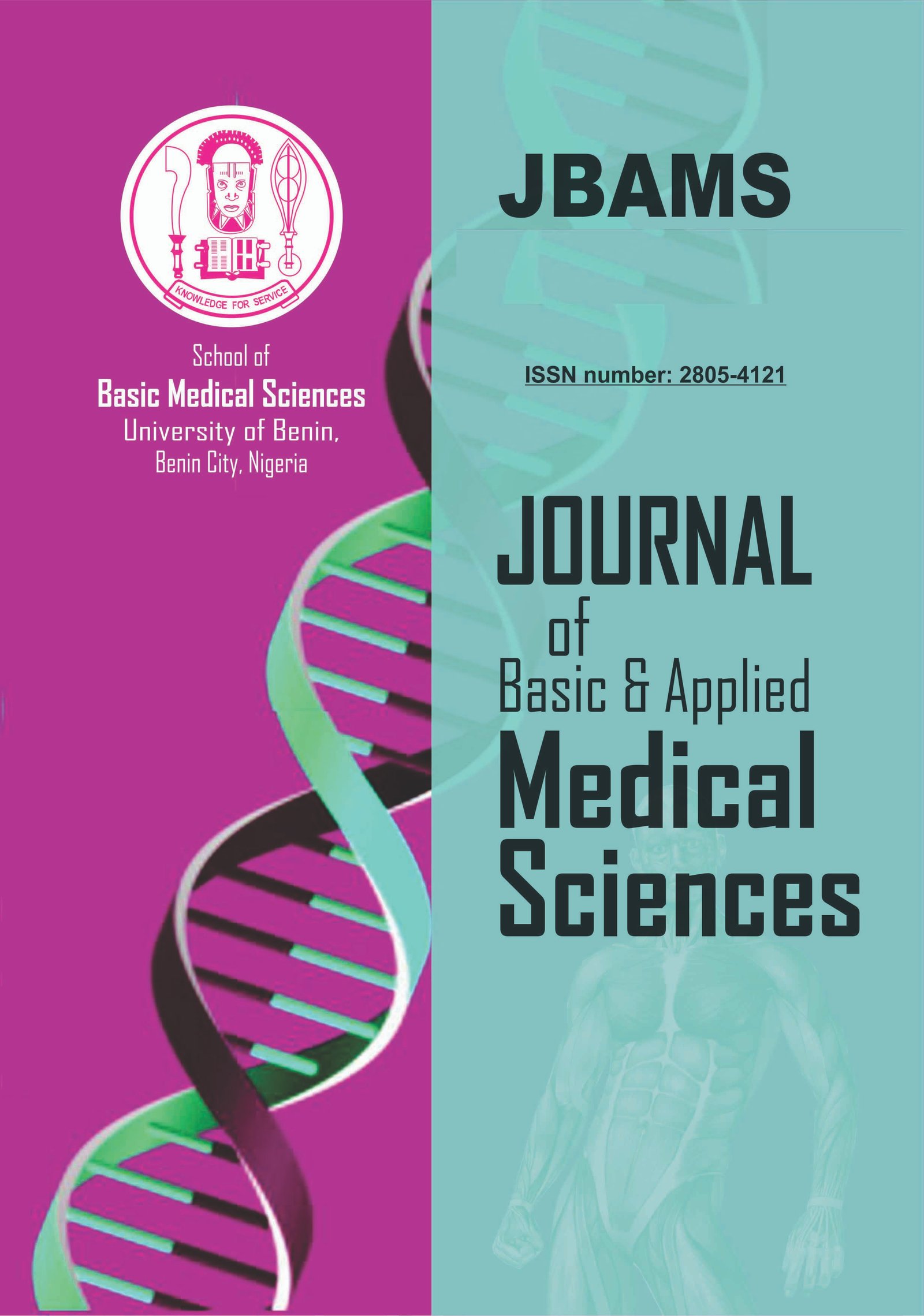The Role of Glycine in Cadmium-Induced Liver Toxicity in Wistar Rats
Keywords:
Glycine, cadmium, anti-inflammatory, ameliorative, Wistar ratsAbstract
Background/Objectives: The liver, a crucial organ responsible for regulating various physiological processes, is susceptible to harm from toxic substances like heavy metals. Cadmium, a toxic heavy metal, is naturally present in the environment. The surge in industrialization has resulted in increased cases of metal poisoning, causing a range of health problems. Glycine with anti-oxidants and anti-inflammatory properties has been demonstrated with some positive outcomes. This study aimed to investigate the role of glycine in liver injury induced by cadmium in Wistar rats. Materials and Methods: Thirty adult Wistar rats weighing between 150 and 170g were divided into six groups (Group A-F) of five rats per group and received 1 ml of distilled water (control), 10 mg/kg body weight of Cadmium, 500 mg/kg body weight of Glycine, 1000 mg/kg body weight of Glycine, 10 mg/kg body weight of Cadmium and 500 mg/kg body weight of Glycine, 10 mg/kg body weight of Cadmium and 1000 mg/kg body weight of Glycine respectively. At the end of the 14 and 28 days treatment, the rats were sacrificed using chloroform anaesthesia, blood and liver tissues were collected for analysis of serum Alanine aminotransferase (ALT), Aspartate aminotransferase (AST) Albumin, total protein tests, and histology of the liver respectively. Results and Conclusion: There was significant decrease (P˂0.05) in the body weights of rats compared to control. There was a significant decrease (P˂0.05) in ALT and a significant increase (P˂0.05) in AST in cadmium treated rats when compared to control. These effects were however reversed with glycine treatments. The total protein and albumin were also significantly decreased (P˂0.05) in cadmium treated rats which were also reversed with glycine treatment. Histological findings showed infiltration of inflammatory cells, vascular congestion and cellular necrosis with cadmium treatment and these were ameliorated with 500 mg/kg of glycine treatment. Conclusively, glycine at 500 mg/kg dose possesses ameliorative and anti-inflammatory potentials against cadmium-induced liver injury.


